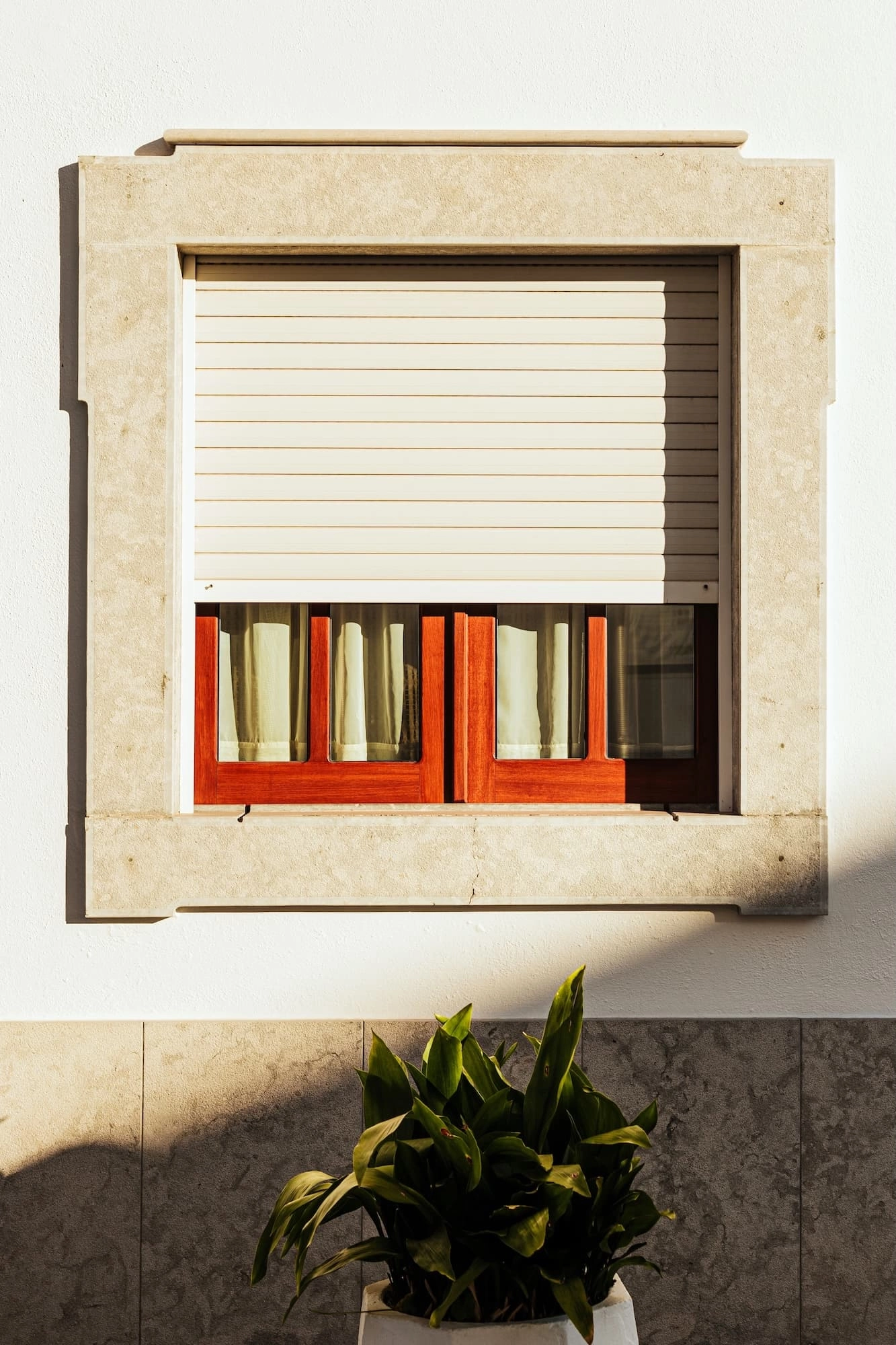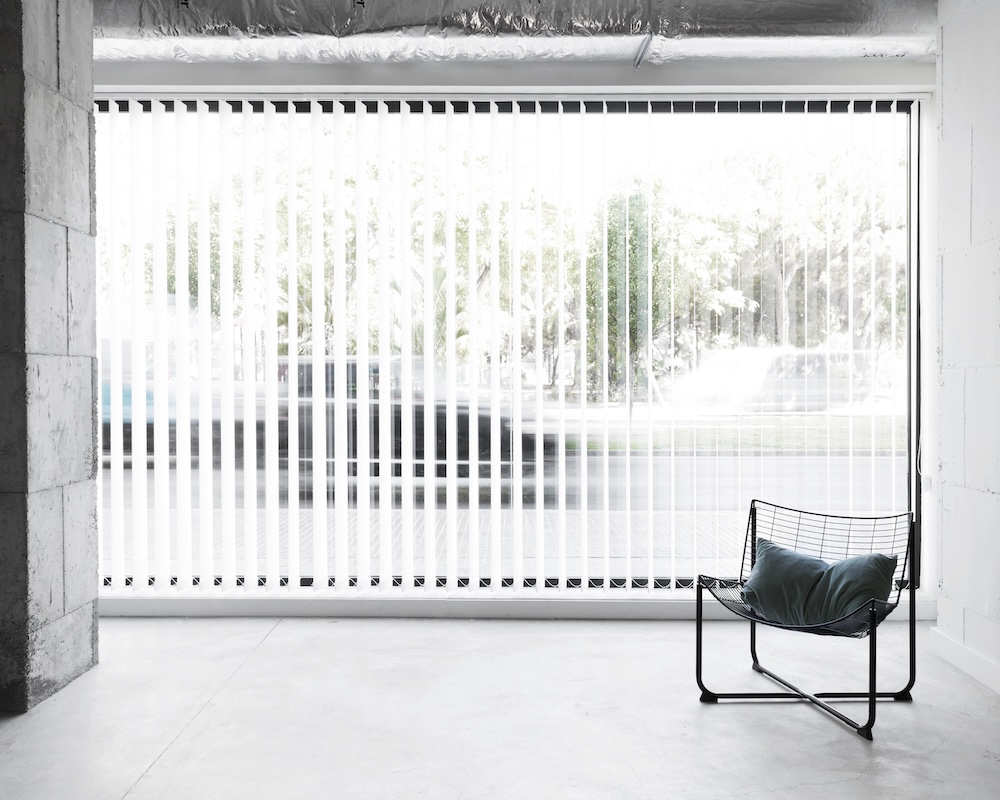
Window blinds, both interior and exterior, are not only a practical solution that allows us to control the amount of light entering our homes, but also an important decorative element for the vast majority of people. Therefore, when choosing blinds for our home, we should pay attention to several key issues that will help us make the best final decision.
In the case of exterior blinds, it’s best if we make the selection at the home design stage. This way, we can choose built-in models, which means no element will extend beyond the facade. At that time, we can also freely adjust the color of the blinds to match the building’s color and window carpentry.
The situation is slightly different when it comes to interior blinds, which are increasingly replacing even curtains in interiors and becoming the most popular way to cover windows. We can’t be surprised by this – they take up very little space, effectively darken rooms, and are also a modern addition that we can control even with a smartphone! Currently, the selection of blinds is enormous, so below we’ll help you understand what to consider when choosing them to satisfy all your needs.
Blinds and the amount of light in rooms
Blinds play a crucial role in regulating the amount of light entering a room and protecting the interior’s privacy from outside views. Therefore, choosing the right blinds requires a thoughtful decision, as different models vary in their degree of protection and light permeability. It’s important to consider your own needs, preferences, and the window’s orientation relative to cardinal directions.
Modern interior blinds that serve as curtain replacements can be made from various materials, usually synthetic fabrics containing polyester fibers. Depending on the fabric weight, blinds can allow more or less light through. Models that effectively darken rooms are ideal for people who need complete shading, especially when windows are exposed to intense sunlight, such as windows facing southwest. Such blinds can also help maintain cooler temperatures in rooms during hot days. On the other hand, blinds with greater light permeability can create a pleasant atmosphere by gently diffusing sunlight, though they will be less effective in protecting against interior heating.
Exterior blinds and which type to choose?
As we mentioned at the very beginning, exterior blinds are best installed during the home construction stage. Unfortunately, not everyone has this opportunity, so the market offers not only built-in exterior blinds but also other types.
Therefore, choosing the appropriate type of exterior blinds involves several important considerations worth pondering. One of them is choosing between surface-mounted and the aforementioned built-in exterior blinds. Surface-mounted exterior blinds, as the name suggests, are mounted outside the plaster layer, meaning their housing is visible on the exterior wall. This option is often used for buildings that have already been insulated, mainly in the case of secondary market properties.
Built-in exterior blinds, on the other hand, have their housing with mechanism installed within the insulation layer, which means it’s not visible from the outside after facade work is completed. This solution is increasingly preferred, however, it requires prior planning, usually at the property construction stage. It should be remembered, though, that this type of blind cannot always be used, especially in buildings with already completed facades.
Therefore, it’s important to plan exterior blind installation at the home design stage or final facade determination. This way, we’ll have greater flexibility and the possibility to choose the best solution adapted to our own needs and requirements.
What to pay special attention to when choosing exterior blinds?
Until recently, we rarely opted for exterior blinds. Currently, however, much has changed, and technologies related to this accessory have advanced and even allow us to control blinds from anywhere in the world! This, in turn, means that the choice is becoming increasingly difficult. With growing awareness about thermal insulation, burglary protection, and the possibility of effective room shading, we pay attention to more and more aspects when choosing blinds. What criteria should we therefore adopt when deciding on such a purchase?
- Build quality
- Drive and control elements
- Custom-made blinds
- Appearance
This is the first and certainly one of the most important factors affecting user comfort. Exterior blinds intended for large windows or as protection for entrance doors must meet high standards of mechanical durability. There is a strict category for assessing wind resistance, which is often overlooked by buyers. However, exterior blinds are subjected to enormous loads from pressing wind. Selecting the appropriate wind resistance category is therefore crucial for ensuring trouble-free operation for many years. The material from which facade blind slats are made must provide adequate rigidity.
Quality assessment of blind construction is based on detailed specifications provided by the manufacturer. In specifications, we can find information regarding slat thickness, type of filling between slats, presence of corrugation, and thermal insulation coefficient. The final decision should be made after consultation with specialists who, thanks to their experience, will help avoid errors resulting from lack of knowledge about blind production technology.
Before making a decision about exterior blinds, it’s worth considering whether we prefer manual or automatic control. Although investing in blinds with a built-in electric motor may be more expensive, it provides unmatched user comfort and the ability to control them remotely. It’s also worth considering that exterior blinds constitute an element of a comprehensive system that includes many windows in the house. In such a situation, mechanical blinds may prove less practical. Manual blinds, on the other hand, work perfectly in rooms on higher floors where residents don’t spend much time.
Regarding blinds equipped with automatic drive, there are additional functionality requirements. Control mechanisms must be integrated with sensor systems and overload protection. Additionally, electrically powered blinds should enable user control via a dedicated mobile application.
To choose appropriate blinds, precise determination of window recess dimensions is necessary. Exterior blinds adapted to specific dimensions will not “accept” measurement errors, so accuracy is crucial here. Especially with blinds intended for large windows, the measurement process becomes particularly important.
What steps need to be taken to properly measure the window recess before ordering custom blinds? First, you need to check the recess width, remembering that both sides may be different lengths. It’s therefore necessary to measure both sides of the rectangle and then determine the window height. Choosing appropriate exterior blinds depends on the building’s individual characteristics and construction. Due to the variety of window recess dimensions, blinds adapted to specific measurements enjoy the greatest popularity among customers.
The wide selection of blind manufacturers is certainly an advantage, but also a so-called “embarrassment of riches” that provides the opportunity to adapt the product to our aesthetic preferences. It’s important not to underestimate this aspect. The blind’s appearance should ultimately harmonize with the facade style, adding coherent character to the building. A well-chosen blind can be like a missing element, emphasizing the entire house’s design. The appropriate blind appearance can also give the property a unique expression, so it’s worth spending some time choosing a model that best fits our aesthetic expectations.

What to pay attention to when choosing interior blinds?
We’ve thoroughly discussed key aspects when choosing exterior blinds, but we should also remember interior blinds, which, especially in apartments, are actually the only possible solution for residents. What aspects should therefore be considered when deciding to choose interior blinds?
- Degree of shading
- Window dimensions
- Installation method
Before deciding on blind selection, let’s determine how much we want to darken rooms in our home. We can choose from different types of blinds, depending on how much light we want to let into the interior. Transparent blinds gently reduce sunlight in the room while keeping the interior well-lit. Light-regulating blinds serve a decorative function during the day and provide room darkening at night. We can also consider semi-transparent blinds, available in solid colors or with interesting patterns, which provide moderate darkening. Complete blackout blinds, on the other hand, restrict light access to the room and are an ideal solution for bedrooms when we need complete privacy at night.
Window dimensions are very important when selecting appropriate blinds. In homes and apartments, we often deal with windows of various sizes, making it difficult to find a ready-made product that perfectly fits in terms of size, color, and material. In such situations, the solution is to use custom blind manufacturer services. This way, we can adapt blinds to our specific needs and preferences, choosing appropriate fabric, dimensions, and installation method. This is an ideal option for those who want blinds perfectly fitted to their windows, ensuring not only functionality but also aesthetic interior appearance.
In the range of window blinds, we’ll find various models that can be installed both invasively and non-invasively. The first method obviously requires using a drill to secure upper rails with screws. This method is more durable but may require some work. For those who don’t want to interfere with their windows and walls, models adapted for non-invasive installation are available. In this case, there’s no need for drilling or damaging the window frame. The blind is then mounted on special hooks using adhesive, ensuring stability without violating the window structure. The final choice of installation method depends solely on individual preferences and user needs, providing flexibility and the ability to adapt to specific conditions and requirements.

















